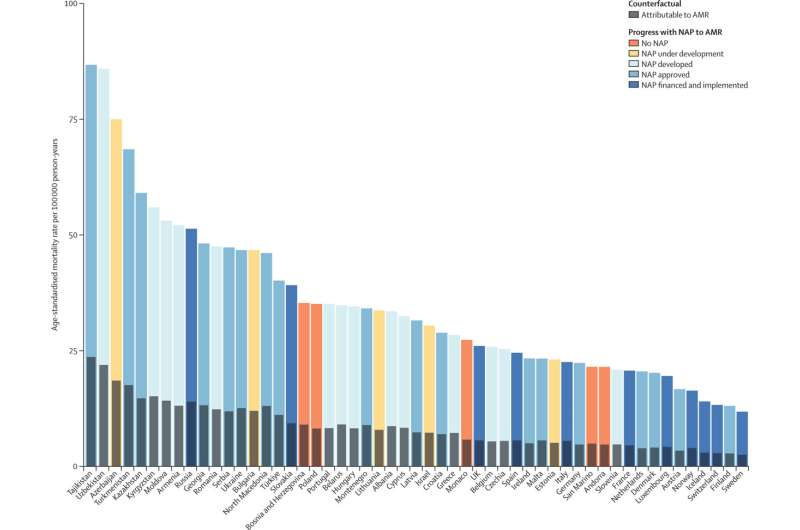Europe's high mortality linked to antimicrobial resistance needs action now

The latest and most comprehensive analysis of antimicrobial resistance (AMR) and its impact in the entire WHO European Region (53 countries) was published in a paper today in The Lancet Public Health. Researchers at the Institute for Health Metrics and Evaluation (IHME) at the University of Washington's School of Medicine, Oxford Center for Global Health Research, Center for Tropical Medicine and Global Health, and other collaborators analyzed 23 bacterial pathogens and 88 pathogen-drug combinations to release the following findings:
- Highest mortality rates both attributable to and associated with AMR were in Eastern Europe, followed by Central Europe.
- 541,000 deaths were associated with bacterial AMR.
- 133,000 deaths were attributable to bacterial AMR.
- 195,000 deaths from bloodstream infections were associated with AMR.
- 127,000 deaths from intra-abdominal infections were associated with AMR.
- 120,000 deaths from respiratory infections were associated with AMR.
- Seven leading pathogens were responsible for 457,000 deaths associated with AMR.
- Methicillin-resistant S. aureus was the leading pathogen-drug combination in 27 countries for deaths attributable to AMR.
- Aminopenicillin-resistant E. coli was the leading pathogen-drug combination in 47 countries for deaths associated with AMR.
In general, countries with national actions plans had lower rates of AMR burden, but further efforts are needed. Some of those strategies include better monitoring, improving hygiene and sanitation, expanding access to vaccines, and developing new treatments.
This is the first country-level analysis following the paper on the global burden of AMR published in January in The Lancet. More country-level estimates are to follow.
AMR will be a topic of discussion at the World Health Summit (WHS) taking place in Berlin, Germany Oct. 16–18. IHME Professor Dr. Mohsen Naghavi will address the global impact at the WHS on Tuesday, Oct. 18, 2022 at 11 a.m. CEST / 5 a.m. EDT.
More information: The burden of bacterial antimicrobial resistance in the WHO European region in 2019: a cross-country systematic analysis, The Lancet Public Health (2022). DOI: 10.1016/S2468-2667(22)00225-0, www.thelancet.com/journals/lan … (22)00225-0/fulltext


















